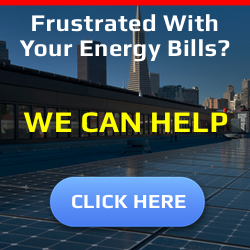A next-generation battery has arrived from Romulus — the city in Michigan.
While there’s no need to assemble an away team, Ford’s headline-making breakthrough, reported on by InsideEVs, could warp already strong electric vehicle adoption to another level. In fact, lead EV engineer Charles Poon wrote on LinkedIn that the unique chemistry being used should produce cheaper rides that can travel longer distances within the decade. The news was also covered by USA Today.
“This isn’t just a lab experiment,” Poon wrote on LinkedIn.
Advertisement
Advertisement
The innovation is a lithium manganese rich, or LMR, battery cell now in its second generation. It is being developed in Ford’s battery research headquarters. The pack offers better safety and can store more energy per pound, according to Poon and the reports. Poon also added that the company is anticipating “unprecedented” cost reduction.
“Our goal is clear: to achieve cost parity with gasoline vehicles and deliver affordable customer solutions tailored to their needs,” the expert wrote.
But in-depth pack details are scarce, leaving “some experts underwhelmed,” per the USA Today. For its part, LMR cathode chemistry has been around for decades. The first Chevy Volt even included a lithium manganese design, all according to the newspaper and an article posted by ScienceDirect.
Watch now: How bad is a gas stove for your home’s indoor air quality?
But performance issues at high current densities have prevented the kind Ford is using from being commercialized more widely. Now the engineers seem to have jumped the hurdles.
Advertisement
Advertisement
When batteries operate, ions move between the anode and cathode through the electrolyte, a crucial middle layer. Scientists for major automakers and in labs elsewhere are trying to lower the cost and environmental impact of the materials that form the components. Manganese is being researched in China, with interesting results billed as “next-generation,” as well. Part of the benefit is eliminating costly cobalt and nickel, according to USA Today.
While the lack of a complete schematic breakdown from Ford is causing some skepticism, the automaker’s achievements to date provide proof of its electric potential. The Mustang Mach E last year set a range record in England at 569.64 miles. The company has also been busy at the patent office, filing paperwork for a realistic EV stick shift, among other unique ideas.
If successful, Ford could blow open the doors on an already-growing EV market. Stateside sales hit nearly 300,000 in the first quarter of 2025, an 11.4% year-over-year jump, per Cox Automotive. Each EV that replaces a gas guzzler nixes thousands of pounds of heat-trapping air pollution, which spews looming gases that increase risks for lung, heart, and other health problems, all according to government reports.
|
If you were going to purchase an EV, which of these factors would be most important to you? Click your choice to see results and speak your mind. |
Tax breaks are still available to incentivize the switch, saving you up to $7,500. That’s in addition to an estimated $1,500 you can bank in gas and maintenance costs. If you add a rooftop solar system to the mix as part of an overall cleaner strategy, you can secure more tax credits and leverage abundant sun energy to charge your cleaner ride — all without necessarily tapping the grid. EnergySage is a free, online tool to help you navigate the solar market. The experts there can even help you find an installer.
Advertisement
Advertisement
Ford is still paying to install at-home charging stations for qualifying customers who buy or lease an EV, as well. While it’s all encouraging, the company had mixed EV news last year when it announced it was shifting an Ontario plant from EV production to combustion-engine truck assembly. The decision counterbalanced some of the bigger electric milestones.
Poon indicated on LinkedIn that the EV commitment remains strong.
“We’ve fostered a culture of relentless innovation, where challenging convention and pushing the boundaries of what’s possible is part of our every day,” the engineer wrote.
Join our free newsletter for weekly updates on the latest innovations improving our lives and shaping our future, and don’t miss this cool list of easy ways to help yourself while helping the planet.







